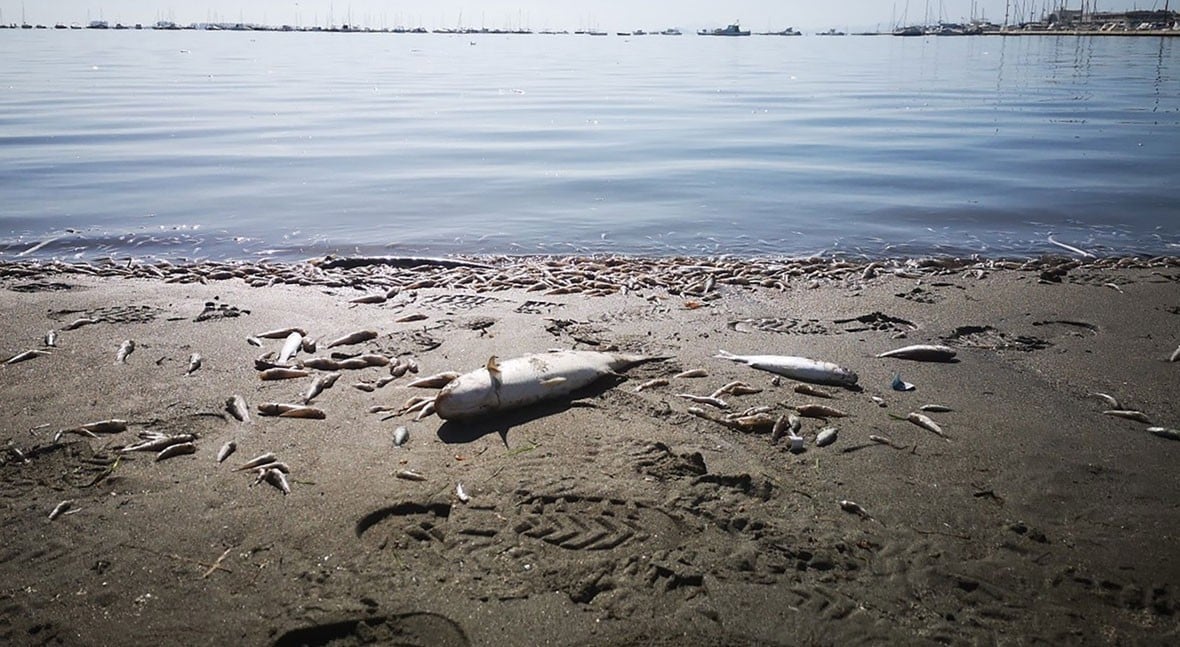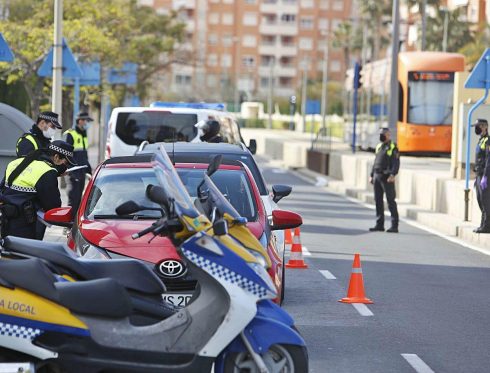THE Mar Menor area of the Murcian coastline is under threat as new studies reveal dangerous chemicals in the water have reached critical levels.
The figures taken by the Spanish Institute of Oceanography on April 1 show that chlorophyll levels have reached up to 4.12 micrograms per litre.
This level bears a striking resemblance to the biblical event that fell on the area last year.
In October 2019, thousands of fish washed up on the shoreline of the Mar Menor on the beaches of Villananitos and La Puntica.
Experts revealed that the mass killing was due to a critical lack of oxygen in the water caused by high levels of chlorophyll.
Juan Manuel Ruiz, a scientist at the Institute and specialist in the Mar Menor fears that current levels could produce a repeat of Octobers events.
“Last year, chlorophyll began to rise linearly, and on October 29, after the second DANA, it reached 38.5 micrograms per litre,” he explained.
The high levels produce a huge amount of green algae and other parasitic sealife that absorbs all the oxygen out of the water.
Without this, other sealife such as fish and crustaceans cannot survive.
Ruiz warns that the politicians in Murcia also gave false hope for the area last year.
“In 2018 the politicians made people believe that it was recovering because there was more transparency in the water, but then it was found that it was not true because the chemicals continue to reach the Mar Menor.”
Pedro Garcia, of the environmental association ANSE, also explained that increased plankton and algae growth is highly linked to the amount of nitrates that were dumped into the ocean.
Agricultural land in the nearby Campo de Cartagena uses the Mar Menor to dump its overflow of phosphorous and nitrates, commonly used for fertilization.
In 2019, a total of 1,575 tonnes of nitrates were found to have been released into the basin, an average of 411 kilograms per day.
Not only did this cause the growth of the algae but also destroyed an area of seabed of almost 9,000 hectares as well as affecting underground water supplies.
Both Garcia and Ruiz have condemned the local governments for not doing enough to preserve the area.
In response, this week a government plenary session listened to the advice of experts and requested that the Ministry of Ecological transfer implement a “zero discharge plan” to stop further dumps into the Mar Menor.
Click here to read more Costa Blanca News from The Olive Press.








